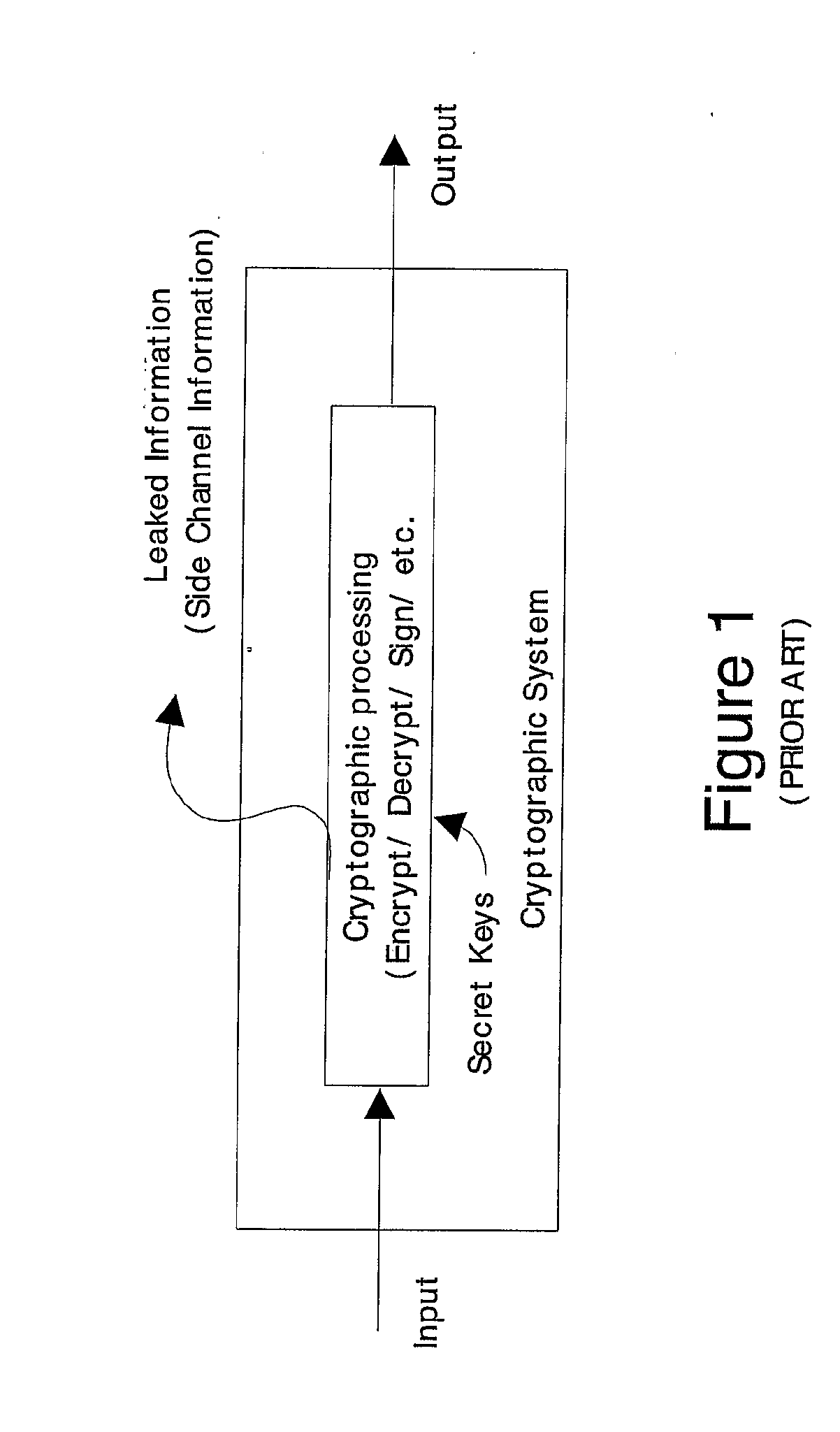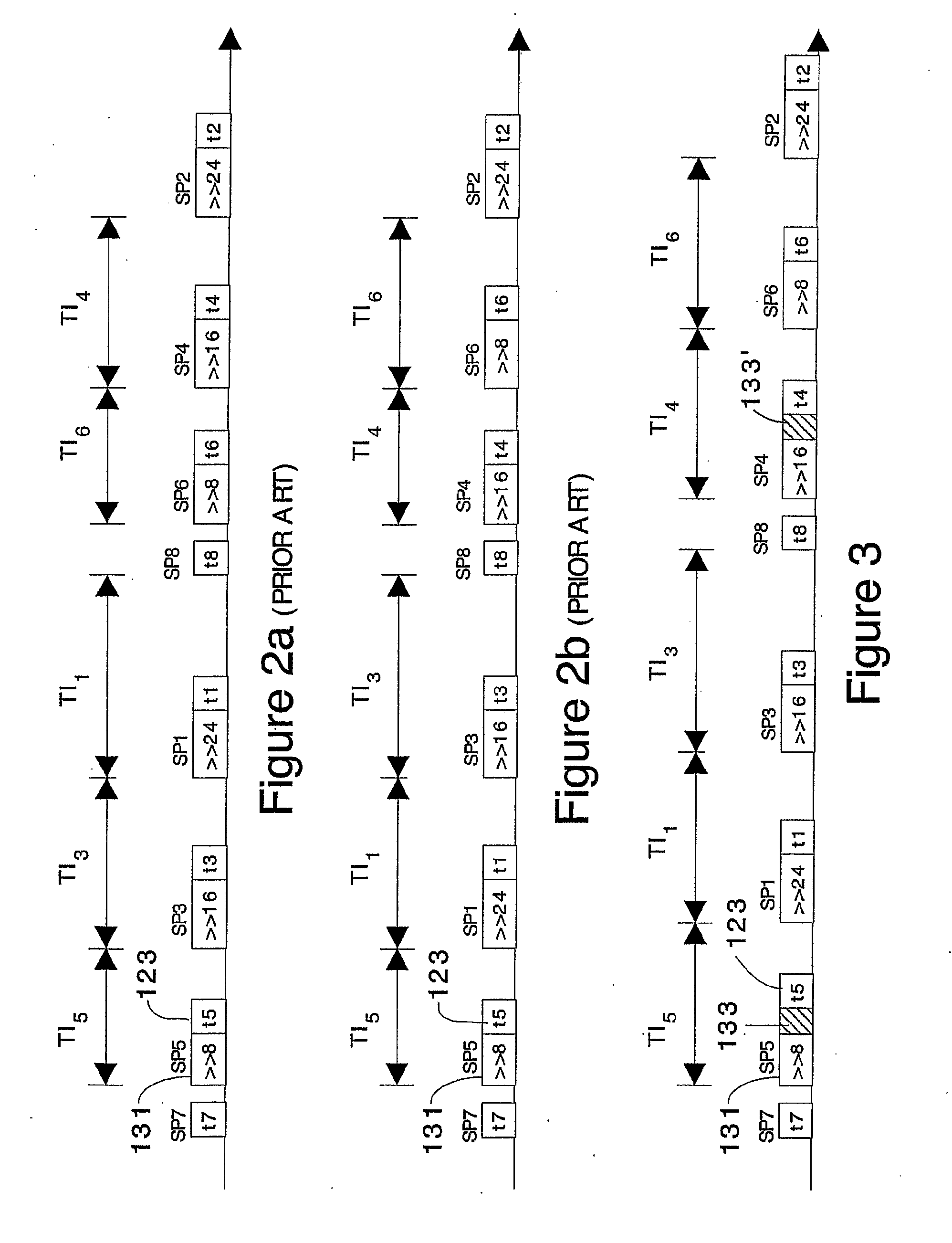Cryptographic architecture with instruction masking and other techniques for thwarting differential power analysis
a cryptographic architecture and instruction masking technology, applied in the security field of cryptographic methods and the cryptographic architecture, can solve the problems of insufficient software approach to randomizing the order of the processing of the target bit, inability to align the side channel information, and inability to completely secure the algorithm
- Summary
- Abstract
- Description
- Claims
- Application Information
AI Technical Summary
Problems solved by technology
Method used
Image
Examples
second embodiment
DETAILED DESCRIPTION OF A SECOND EMBODIMENT
[0097]FIG. 6 depicts another embodiment of a hardware architecture for implementing the DES algorithm which may be used to insert a random number of random pseudo instructions 133 (see FIG. 3).
[0098] Since a DPA attacker is focused on aligning the power trace associated with each 4-bit output target by tracking the shifting instruction signatures, the first embodiment of FIG. 5 disables this tracking ability by inserting a random number of RIM instructions in each SP box's entry address calculation subroutine. In this embodiment, however, not only the number but also the content of these instructions will be altered, as described in detail below.
[0099] This second embodiment, as shown in FIG. 6, is very similar to the first embodiment of FIG. 5 and therefore common elements are identified by common reference numerals. As in the case of the embodiment of FIG. 5, this embodiment preferably has a 32-bit CPU 101 with RAM memories 103 and ROM ...
third embodiment
DETAILED DESCRIPTION OF A THIRD EMBODIMENT
[0102]FIG. 7 depicts a third embodiment that is more resistant to probing than the embodiments of either FIG. 5 or 6 and FIG. 8 presents a time line for this embodiment. This embodiment overcomes a single point failure attack, that is, an attack on line 111 of the foregoing embodiments, by introducing a Shift Control Counter (SCC) 140 and other changes discussed below. This embodiment is described with reference an embodiment in which the total number of shift instructions (both real and pseudo) are fixed at twenty-four in number. However, those skilled in the art should now appreciate that the number of fixed and real instructions can be fixed at some other number or can be randomized utilizing the techniques previously described with reference to FIGS. 5 and 6. The embodiment of FIG. 7 anticipates an attack will occur on line 11 and the previously disclosed design of line 111 is modified so that even in the event of a successful attack, th...
fourth embodiment
DETAILED DESCRIPTION OF A FOURTH EMBODIMENT
[0111] The total number of shifts in each SP box need not be fixed at twenty four (or some other number, for that matter), but may be varied or randomized, if desired. That complicates the design of the CPU shown in FIG. 7 somewhat, for example, by incorporating the design of either FIG. 5 or 6, but the modification needed to randomize the total number of shift instructions is rather straightforward, as can be seen by reference to FIG. 9 which shows a fourth embodiment as combination of the embodiments of FIGS. 6 and 7.
PUM
 Login to View More
Login to View More Abstract
Description
Claims
Application Information
 Login to View More
Login to View More - R&D
- Intellectual Property
- Life Sciences
- Materials
- Tech Scout
- Unparalleled Data Quality
- Higher Quality Content
- 60% Fewer Hallucinations
Browse by: Latest US Patents, China's latest patents, Technical Efficacy Thesaurus, Application Domain, Technology Topic, Popular Technical Reports.
© 2025 PatSnap. All rights reserved.Legal|Privacy policy|Modern Slavery Act Transparency Statement|Sitemap|About US| Contact US: help@patsnap.com



